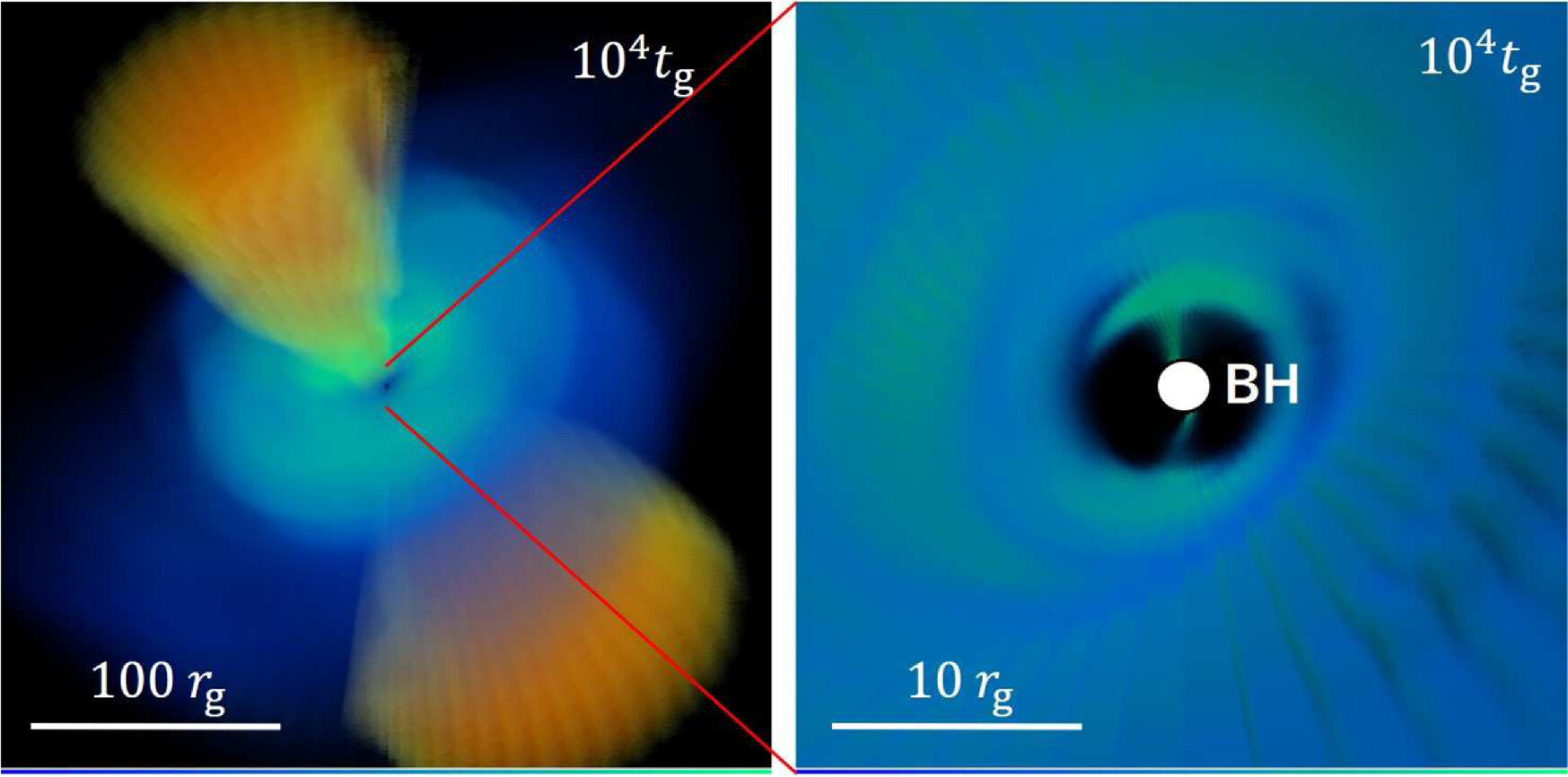Black holes create... cosmic spinning tops
Follow us on Google News (click on ☆)
A new study reveals that ultraluminous accretion disks could also oscillate like a spinning top when the black hole rotates. This discovery raises questions about the origin of some observed cosmic fluctuations.

Density (blue) and Lorentz factor (orange) visualized.
Right: density distribution near the black hole (white filled circle).
Credit: The Astrophysical Journal (2024).
Led by the University of Tsukuba, the hydrodynamic simulation modeled this precession for ultraluminous disks. This phenomenon, never observed before at this scale, demonstrates the influence of the black hole's spin.
This oscillation could impact not only the direction of the plasma jets but also the brightness emitted by these disks. Periodic variations in luminosity, previously poorly understood, now seem to be explained by the black hole's rotation. Ultraluminous black holes generate intense radiation, approaching the Eddington limit. The simulation, based on general relativity, sheds light on their behavior and paves the way for new investigations into these extreme objects.
Researchers plan to compare their results with long-term observational data to confirm the rotation of black holes. This could provide key insights into the structure of spacetime around these celestial bodies. These discoveries promise to offer crucial evidence on general relativity and black hole physics, revealing the influence of their spin on the cosmos.
What is an accretion disk?
An accretion disk forms around a massive astronomical object, such as a black hole, a neutron star, or a young star. The surrounding matter, attracted by gravity, spirals around this object, forming a disk. As this matter falls toward the central object, it heats up and emits a large amount of energy in the form of light and radiation. It is one of the most efficient energy processes in the universe.
Accretion disks are not limited to black holes. They are also observed around forming stars or in binary systems where one star draws material from its companion. Their dynamics depend on the gravity and rotation of the central object, as well as the forces acting on the gas and dust.
What is the Eddington limit?
The Eddington limit represents a theoretical threshold of luminosity that an astronomical object, such as a star or black hole, can reach without expelling the matter around it. This occurs when the radiation pressure produced by the object equals the gravitational force pulling matter towards it.
When this limit is exceeded, the radiation pushes matter outward, preventing further accumulation. This limit is crucial in accretion disks, particularly around black holes, where it determines the amount of matter that can be absorbed before the radiation expels the rest.